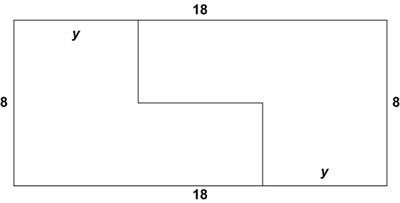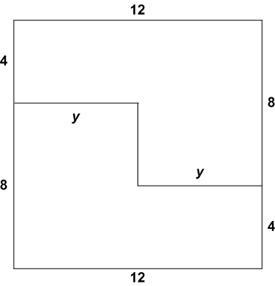2006 AMC 12A Problems/Problem 6
- The following problem is from both the 2006 AMC 12A #6 and 2006 AMC 10A #7, so both problems redirect to this page.
Problem
The ![]() rectangle
rectangle ![]() is cut into two congruent hexagons, as shown, in such a way that the two hexagons can be repositioned without overlap to form a square. What is
is cut into two congruent hexagons, as shown, in such a way that the two hexagons can be repositioned without overlap to form a square. What is ![]() ?
?
![]()
Solution
Since the two hexagons are going to be repositioned to form a square without overlap, the area will remain the same. The rectangle's area is ![]() . This means the square will have four sides of length 12. The only way to do this is shown below.
. This means the square will have four sides of length 12. The only way to do this is shown below.
As you can see from the diagram, the line segment denoted as ![]() is half the length of the side of the square, which leads to
is half the length of the side of the square, which leads to ![]()
![]() .
.
See also
| 2006 AMC 12A (Problems • Answer Key • Resources) | |
| Preceded by Problem 5 |
Followed by Problem 7 |
| 1 • 2 • 3 • 4 • 5 • 6 • 7 • 8 • 9 • 10 • 11 • 12 • 13 • 14 • 15 • 16 • 17 • 18 • 19 • 20 • 21 • 22 • 23 • 24 • 25 | |
| All AMC 12 Problems and Solutions | |
| 2006 AMC 10A (Problems • Answer Key • Resources) | ||
| Preceded by Problem 6 |
Followed by Problem 8 | |
| 1 • 2 • 3 • 4 • 5 • 6 • 7 • 8 • 9 • 10 • 11 • 12 • 13 • 14 • 15 • 16 • 17 • 18 • 19 • 20 • 21 • 22 • 23 • 24 • 25 | ||
| All AMC 10 Problems and Solutions | ||











